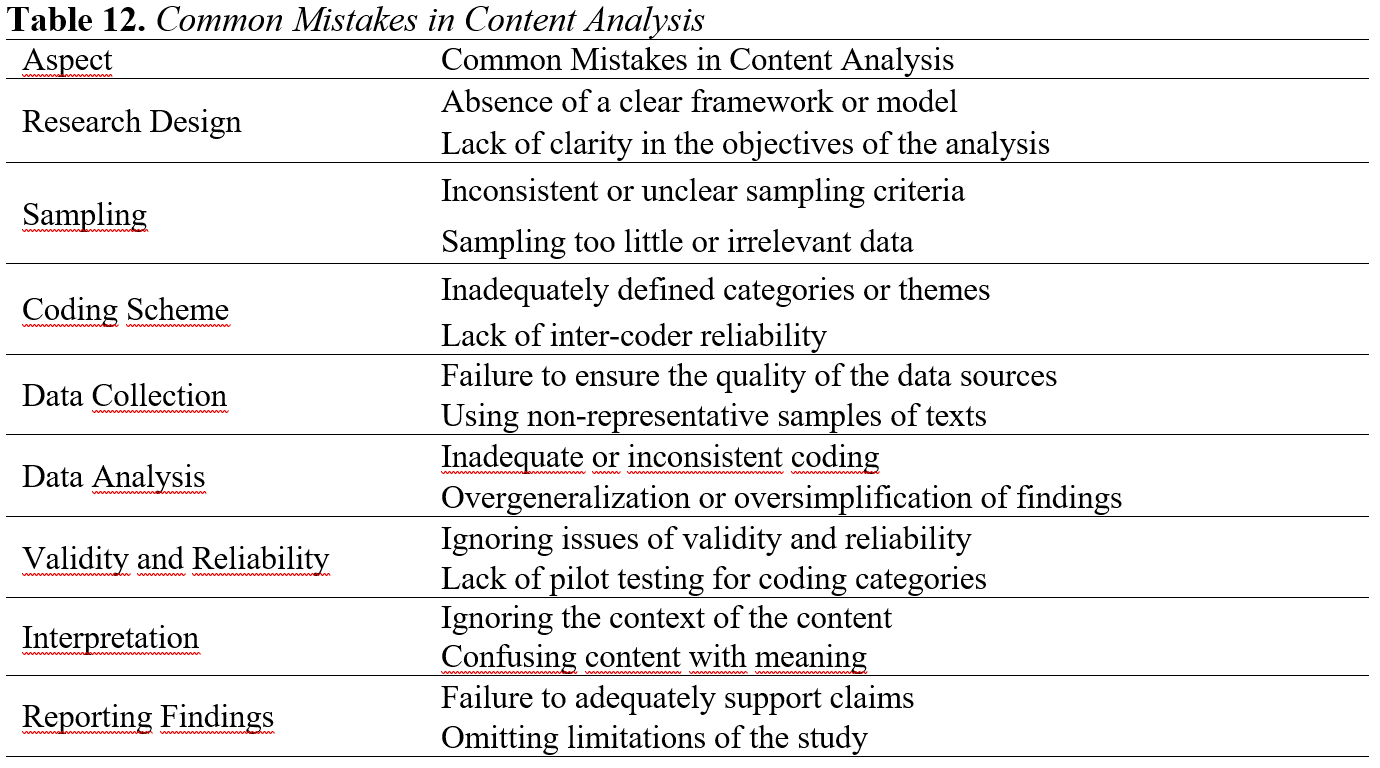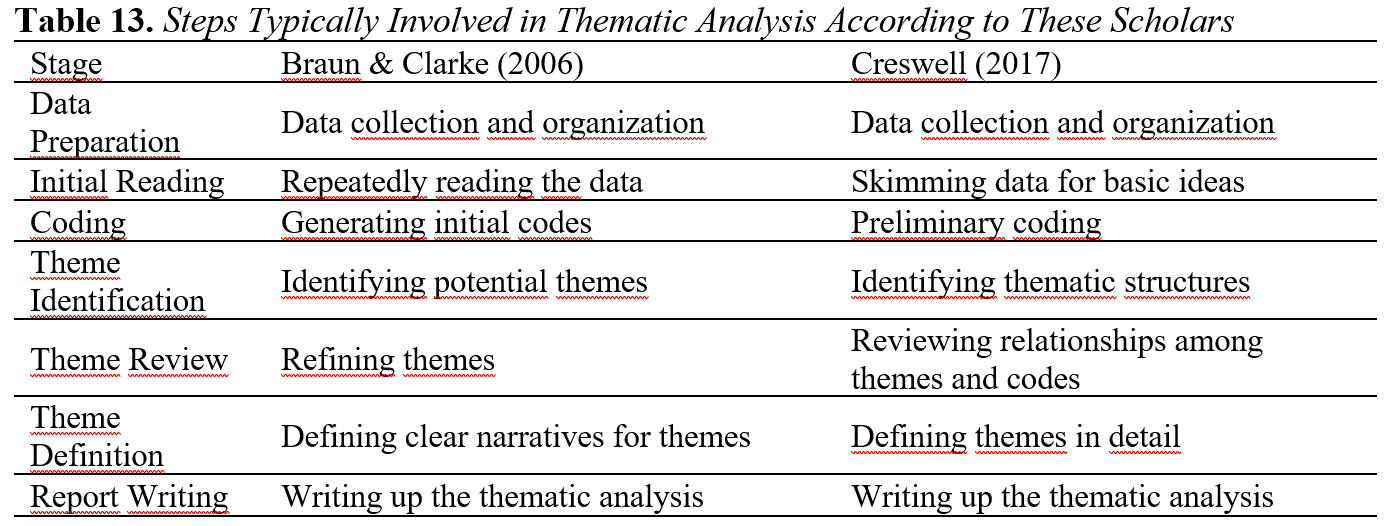Content Analysis is the systematic examination of written, verbal, or visual forms of communication (Krippendorff, 2004). This method is particularly useful for understanding what occurs frequently or infrequently within a specific data set. Content analysis is often used in media studies, political analyses, social sciences, and market research. The aim is to construct some sort of "reality" or meaning by counting or categorizing elements within the text. Its importance lies in measuring and interpreting social, cultural, or political trends. The content analysis is a research method used to identify patterns in recorded communication. The Table 12 outlines the common mistakes made by authors when conducting content analysis:

Table 12 summarizes common errors in content analysis in different aspects of various research processes. Errors in research design are noted, such as the lack of a clear framework or model and the vagueness of the purposes of the analysis. In the sampling phase, errors include inconsistent or unclear sampling criteria and sampling of insufficient or irrelevant data. In the process of determining the coding scheme, problems such as inadequately defined categories or themes and lack of reliability among coders arise. During the data collection phase, errors in ensuring the quality of data sources and using unrepresented text samples occur. During the data analysis process, errors are made in inadequate or inconsistent coding and overgeneralization or simplification of findings. Mistakes are made in validity and reliability, such as ignoring validity and reliability issues and not pilot testing coding categories. At the interpretation stage, errors are found in ignoring the context of the content and mistaking content for meaning. At the stage of reporting the findings, mistakes are made such as supporting the claims insufficiently and overlooking the limitations of the study.


